 W
WTwentieth-century art—and what it became as modern art—began with modernism in the late nineteenth century. Nineteenth-century movements of Post-Impressionism, Art Nouveau and Symbolism led to the first twentieth-century art movements of Fauvism in France and Die Brücke in Germany. Fauvism in Paris introduced heightened non-representational colour into figurative painting. Die Brücke strove for emotional Expressionism. Another German group was Der Blaue Reiter, led by Kandinsky in Munich, who associated the blue rider image with a spiritual non-figurative mystical art of the future. Kandinsky, Kupka, R. Delaunay and Picabia were pioneers of abstract art. Cubism, generated by Picasso, Braque, Metzinger, Gleizes and others rejected the plastic norms of the Renaissance by introducing multiple perspectives into a two-dimensional image. Futurism incorporated the depiction of movement and machine age imagery. Dadaism, with its most notable exponents, Marcel Duchamp, who rejected conventional art styles altogether by exhibiting found objects, notably a urinal, and too Francis Picabia, with his Portraits Mécaniques.
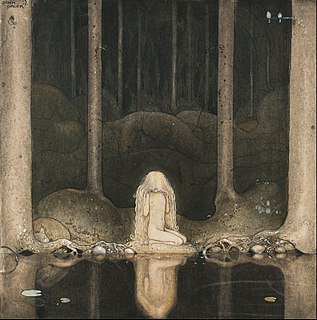 W
WAmong Gnomes and Trolls, is a popular Swedish folklore and fairy tales annual and children's fairy tale anthology published since 1907. One of the most noted of the early illustrators is artist John Bauer.
 W
WArt in Medieval Scotland includes all forms of artistic production within the modern borders of Scotland, between the fifth century and the adoption of the Renaissance in the early sixteenth century. In the early Middle Ages, there were distinct material cultures evident in the different federations and kingdoms within what is now Scotland. Pictish art was the only uniquely Scottish Medieval style; it can be seen in the extensive survival of carved stones, particularly in the north and east of the country, which hold a variety of recurring images and patterns. It can also be seen in elaborate metal work that largely survives in buried hoards. Irish-Scots art from the kingdom of Dál Riata suggests that it was one of the places, as a crossroads between cultures, where the Insular style developed.
 W
WAustralian tonalism was an art movement that emerged in Melbourne during the 1910s. Known at the time as tonal realism or Meldrumism, the movement was founded by artist and art teacher Max Meldrum, who developed a unique theory of painting, the "Scientific Order of Impressions". He argued that painting was a pure science of optical analysis, and believed that a painter should aim to create an exact illusion of spatial depth by carefully observing in nature tone and tonal relationships and spontaneously recording them in the order that they had been received by the eye.
 W
WCabinets of curiosities were collections of notable objects. The term cabinet originally described a room rather than a piece of furniture. Modern terminology would categorize the objects included as belonging to natural history, geology, ethnography, archaeology, religious or historical relics, works of art, and antiquities. The classic cabinet of curiosities emerged in the sixteenth century, although more rudimentary collections had existed earlier. In addition to the most famous and best documented cabinets of rulers and aristocrats, members of the merchant class and early practitioners of science in Europe formed collections that were precursors to museums.
 W
WCeltic art is associated with the peoples known as Celts; those who spoke the Celtic languages in Europe from pre-history through to the modern period, as well as the art of ancient peoples whose language is uncertain, but have cultural and stylistic similarities with speakers of Celtic languages.
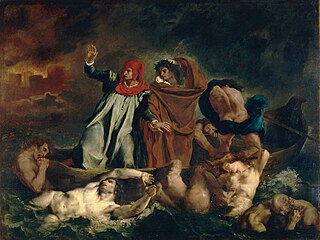 W
WThe Western classical tradition is the reception of classical Greco-Roman antiquity by later cultures, especially the post-classical West, involving texts, imagery, objects, ideas, institutions, monuments, architecture, cultural artifacts, rituals, practices, and sayings. Philosophy, political thought, and mythology are three major examples of how classical culture survives and continues to have influence. The West is one of a number of world cultures regarded as having a classical tradition, including the Indian, Chinese, Judaic, and Islamic traditions.
 W
WColor field painting is a style of abstract painting that emerged in New York City during the 1940s and 1950s. It was inspired by European modernism and closely related to abstract expressionism, while many of its notable early proponents were among the pioneering abstract expressionists. Color field is characterized primarily by large fields of flat, solid color spread across or stained into the canvas creating areas of unbroken surface and a flat picture plane. The movement places less emphasis on gesture, brushstrokes and action in favour of an overall consistency of form and process. In color field painting "color is freed from objective context and becomes the subject in itself."
 W
WCroatian Pre-Romanesque art and architecture or Old Croatian Art is Pre-Romanesque art and architecture of Croats from their arrival at Balkans till the end of the 11th century when begins the dominance of Romanesque style in art; that was the time of Croatian rulers.
 W
WDutch Golden Age painting is the painting of the Dutch Golden Age, a period in Dutch history roughly spanning the 17th century, during and after the later part of the Eighty Years' War (1568–1648) for Dutch independence.
 W
WEarly Netherlandish painting, traditionally known as the Flemish Primitives, refers to the work of artists active in the Burgundian and Habsburg Netherlands during the 15th- and 16th-century Northern Renaissance period. It flourished especially in the cities of Bruges, Ghent, Mechelen, Leuven, Tournai and Brussels, all in present-day Belgium. The period begins approximately with Robert Campin and Jan van Eyck in the 1420s and lasts at least until the death of Gerard David in 1523, although many scholars extend it to the start of the Dutch Revolt in 1566 or 1568. Early Netherlandish painting coincides with the Early and High Italian Renaissance but the early period is seen as an independent artistic evolution, separate from the Renaissance humanism that characterised developments in Italy, although beginning in the 1490s as increasing numbers of Netherlandish and other Northern painters traveled to Italy, Renaissance ideals and painting styles were incorporated into northern painting. As a result, Early Netherlandish painters are often categorised as belonging to both the Northern Renaissance and the Late or International Gothic.
 W
WFauvism /ˈfoʊvɪzm̩/ is the style of les Fauves, a group of early 20th-century modern artists whose works emphasized painterly qualities and strong color over the representational or realistic values retained by Impressionism. While Fauvism as a style began around 1904 and continued beyond 1910, the movement as such lasted only a few years, 1905–1908, and had three exhibitions. The leaders of the movement were André Derain and Henri Matisse.
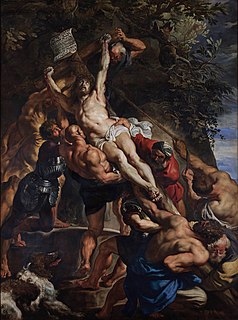 W
WFlemish Baroque painting refers to the art produced in the Southern Netherlands during Spanish control in the 16th and 17th centuries. The period roughly begins when the Dutch Republic was split from the Habsburg Spain regions to the south with the Spanish recapturing of Antwerp in 1585 and goes until about 1700, when Spanish Habsburg authority ended with the death of King Charles II. Antwerp, home to the prominent artists Peter Paul Rubens, Anthony van Dyck, and Jacob Jordaens, was the artistic nexus, while other notable cities include Brussels and Ghent.
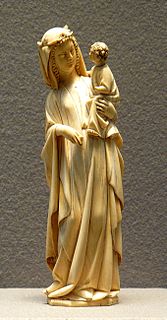 W
WFrench art consists of the visual and plastic arts originating from the geographical area of France. Modern France was the main centre for the European art of the Upper Paleolithic, then left many megalithic monuments, and in the Iron Age many of the most impressive finds of early Celtic art. The Gallo-Roman period left a distinctive provincial style of sculpture, and the region around the modern Franco-German border led the empire in the mass production of finely decorated Ancient Roman pottery, which was exported to Italy and elsewhere on a large scale. With Merovingian art the story of French styles as a distinct and influential element in the wider development of the art of Christian Europe begins.
 W
WThe Société des Artistes Indépendants, Salon des Indépendants was formed in Paris on 29 July 1884. The association began with the organization of massive exhibitions in Paris, choosing the slogan "sans jury ni récompense". Albert Dubois-Pillet, Odilon Redon, Georges Seurat and Paul Signac were among its founders. For the following three decades their annual exhibitions set the trends in art of the early 20th century, along with the Salon d'Automne. This is where artworks were often first displayed and widely discussed. World War I brought a closure to the salon, though the Artistes Indépendants remained active. Since 1920, the headquarters is located in the vast basements of the Grand Palais.
 W
WGaur was a Basque artistic group founded in 1966 by Amable Arias, Rafael Ruiz Balerdi, Nestor Basterretxea, Eduardo Chillida, Remigio Mendiburu, Jorge Oteiza, José Antonio Sistiaga, and José Luis Zumeta. The avant-garde group, based in Gipuzkoa, Spain, provided the springboard for a wide Basque artistic movement with close links to influential social, cultural and political agents in the Basque Country opposed to Franco's dictatorship during the 70s and early 80s.
 W
WHard-edge painting is painting in which abrupt transitions are found between color areas. Color areas are often of one unvarying color. The Hard-edge painting style is related to Geometric abstraction, Op Art, Post-painterly Abstraction, and Color Field painting.
 W
WAn illuminated manuscript is a manuscript in which the text is supplemented with such decoration as initials, borders (marginalia), and miniature illustrations. In the strictest definition, the term refers only to manuscripts decorated with either gold or silver; but in both common usage and modern scholarship, the term refers to any decorated or illustrated manuscript from Western traditions. Comparable Far Eastern and Mesoamerican works are described as painted. Islamic manuscripts may be referred to as illuminated, illustrated, or painted, though using essentially the same techniques as Western works.
 W
WSince ancient times, Greeks, Etruscans and Celts have inhabited the south, centre and north of the Italian peninsula respectively. The very numerous rock drawings in Valcamonica are as old as 8,000 BC, and there are rich remains of Etruscan art from thousands of tombs, as well as rich remains from the Greek colonies at Paestum, Agrigento and elsewhere. Ancient Rome finally emerged as the dominant Italian and European power. The Roman remains in Italy are of extraordinary richness, from the grand Imperial monuments of Rome itself to the survival of exceptionally preserved ordinary buildings in Pompeii and neighbouring sites. Following the fall of the Roman Empire, in the Middle Ages Italy, especially the north, remained an important centre, not only of the Carolingian art and Ottonian art of the Holy Roman Emperors, but for the Byzantine art of Ravenna and other sites.
 W
WMannerism, also known as Late Renaissance, is a style in European art that emerged in the later years of the Italian High Renaissance around 1520, spreading by about 1530 and lasting until about the end of the 16th century in Italy, when the Baroque style largely replaced it. Northern Mannerism continued into the early 17th century.
 W
WMassurrealism is a portmanteau word coined in 1992 by American artist James Seehafer, who described a trend among some postmodern artists that mix the aesthetic styles and themes of surrealism and mass media—including pop art.
 W
WMasterpiece, magnum opus or chef-d’œuvre in modern use is a creation that has been given much critical praise, especially one that is considered the greatest work of a person's career or to a work of outstanding creativity, skill, profundity, or workmanship. Historically, a "masterpiece" was a work of a very high standard produced to obtain membership of a guild or academy in various areas of the visual arts and crafts.
 W
WMerz is a synonym for the more common expression and term Dada, and traces back to Kurt Schwitters.
 W
WVarious types of visual arts developed in the geographical area now known as Mexico. The development of these arts roughly follows the history of Mexico, divided into the prehispanic Mesoamerican era, the colonial period, with the period after Mexican War of Independence, the development Mexican national identity through art in the nineteenth century, and the florescence of modern Mexican art after the Mexican Revolution (1910-1920).
 W
WIn visual arts, music, and other media, minimalism is an art movement that began in post–World War II Western art, most strongly with American visual arts in the 1960s and early 1970s. Prominent artists associated with minimalism include Donald Judd, Agnes Martin, Dan Flavin, Carl Andre, Robert Morris, Anne Truitt, and Frank Stella. The movement is often interpreted as a reaction against abstract expressionism and modernism; it anticipated contemporary postminimal art practices, which extend or reflect on minimalism's original objectives.
 W
WMinimalism describes movements in various forms of art and design, especially visual art and music, where the work is set out to expose the essence, essentials or identity of a subject through eliminating all non-essential forms, features or concepts. As a specific movement in the arts it is identified with developments in post–World War II Western Art, most strongly with American visual arts in the 1960s and early 1970s. Prominent artists associated with this movement include Ad Reinhardt, Nassos Daphnis, Tony Smith, Donald Judd, John McCracken, Agnes Martin, Dan Flavin, Robert Morris, Larry Bell, Anne Truitt, Yves Klein and Frank Stella. Artists themselves have sometimes reacted against the label due to the negative implication of the work being simplistic. Minimalism is often interpreted as a reaction to abstract expressionism and a bridge to postminimal art practices.
 W
WModern sculpture is generally considered to have begun with the work of Auguste Rodin, who is seen as the progenitor of modern sculpture. While Rodin did not set out to rebel against the past, he created a new way of building his works. He "dissolved the hard outline of contemporary Neo-Greek academicism, and thereby created a vital synthesis of opacity and transparency, volume and void". Along with a few other artists in the late 19th century who experimented with new artistic visions in sculpture like Edgar Degas and Paul Gauguin, Rodin invented a radical new approach in the creation of sculpture. Modern sculpture, along with all modern art, "arose as part of Western society's attempt to come to terms with the urban, industrial and secular society that emerged during the nineteenth century".
 W
WOttonian art is a style in pre-romanesque German art, covering also some works from the Low Countries, northern Italy and eastern France. It was named by the art historian Hubert Janitschek after the Ottonian dynasty which ruled Germany and northern Italy between 919 and 1024 under the kings Henry I, Otto I, Otto II, Otto III and Henry II. With Ottonian architecture, it is a key component of the Ottonian Renaissance. However, the style neither began nor ended to neatly coincide with the rule of the dynasty. It emerged some decades into their rule and persisted past the Ottonian emperors into the reigns of the early Salian dynasty, which lacks an artistic "style label" of its own. In the traditional scheme of art history, Ottonian art follows Carolingian art and precedes Romanesque art, though the transitions at both ends of the period are gradual rather than sudden. Like the former and unlike the latter, it was very largely a style restricted to a few of the small cities of the period, and important monasteries, as well as the court circles of the emperor and his leading vassals.
 W
W20th-century Western painting begins with the heritage of late-19th-century painters Vincent van Gogh, Paul Cézanne, Paul Gauguin, Georges Seurat, Henri de Toulouse-Lautrec, and others who were essential for the development of modern art. At the beginning of the 20th century, Henri Matisse and several other young artists including the pre-cubist Georges Braque, André Derain, Raoul Dufy and Maurice de Vlaminck, revolutionized the Paris art world with "wild", multi-colored, expressive landscapes and figure paintings that the critics called Fauvism. Matisse's second version of The Dance signified a key point in his career and in the development of modern painting. It reflected Matisse's incipient fascination with primitive art: the intense warm color of the figures against the cool blue-green background and the rhythmical succession of the dancing nudes convey the feelings of emotional liberation and hedonism.
 W
WThe history of painting reaches back in time to artifacts from pre-historic humans, and spans all cultures. It represents a continuous, though periodically disrupted, tradition from Antiquity. Across cultures, and spanning continents and millennia, the history of painting is an ongoing river of creativity, that continues into the 21st century. Until the early 20th century it relied primarily on representational, religious and classical motifs, after which time more purely abstract and conceptual approaches gained favor.
 W
WThe history of Western painting represents a continuous, though disrupted, tradition from antiquity until the present time. Until the mid-19th century it was primarily concerned with representational and Classical modes of production, after which time more modern, abstract and conceptual forms gained favor.
 W
WArt in Poland refers to all forms of visual art in or associated with Poland.
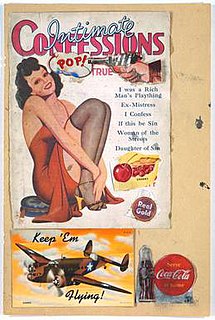 W
WPop art is an art movement that emerged in the United Kingdom and the United States during the mid- to late-1950s. The movement presented a challenge to traditions of fine art by including imagery from popular and mass culture, such as advertising, comic books and mundane mass-produced objects. One of its aims is to use images of popular culture in art, emphasizing the banal or kitschy elements of any culture, most often through the use of irony. It is also associated with the artists' use of mechanical means of reproduction or rendering techniques. In pop art, material is sometimes visually removed from its known context, isolated, or combined with unrelated material.
 W
WPre-Romanesque art and architecture is the period in European art from either the emergence of the Merovingian kingdom in about 500 AD or from the Carolingian Renaissance in the late 8th century, to the beginning of the 11th century Romanesque period. The term is generally used in English only for architecture and monumental sculpture, but here all the arts of the period are briefly described.
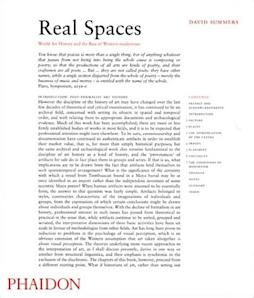 W
WReal Spaces: World Art History and the Rise of Western Modernism is a non-fiction book by art historian David Summers, who aims to reconcile Western art history to artistic cultural production around the world from all time periods.
 W
WRenaissance art is the painting, sculpture and decorative arts of the period of European history known as the Renaissance, which emerged as a distinct style in Italy in about AD 1400, in parallel with developments which occurred in philosophy, literature, music, science and technology. Renaissance art took as its foundation the art of Classical antiquity, perceived as the noblest of ancient traditions, but transformed that tradition by absorbing recent developments in the art of Northern Europe and by applying contemporary scientific knowledge. Along with Renaissance humanist philosophy, it spread throughout Europe, affecting both artists and their patrons with the development of new techniques and new artistic sensibilities. For art historians, Renaissance art marks the transition of Europe from the medieval period to the Early Modern age.
 W
WRepresentations of slavery in European art date back to ancient times. They show slaves of varied ethnicity, white as well as black.
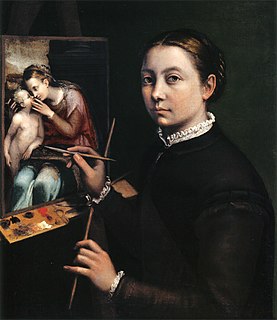 W
WThe Story of Women and Art is a television documentary series, consisting of three one-hour episodes, on the history of women artists in Europe from the Renaissance onwards, first broadcast in the United Kingdom on BBC Two in May 2014. The series is presented by Professor Amanda Vickery.
 W
WThe Art of the United Kingdom refers to all forms of visual art in or associated with the United Kingdom since the formation of the Kingdom of Great Britain in 1707 and encompass English art, Scottish art, Welsh art and Irish art, and forms part of Western art history. During the 18th century Britain began to reclaim the leading place England had played in European art during the Middle Ages, being especially strong in portraiture and landscape art. Increasing British prosperity led to a greatly increased production of both fine art and the decorative arts, the latter often being exported. The Romantic period resulted from very diverse talents, including the painters William Blake, J. M. W. Turner, John Constable and Samuel Palmer. The Victorian period saw a great diversity of art, and a far larger quantity created than before. Much Victorian art is now out of critical favour, with interest concentrated on the Pre-Raphaelites and the innovative movements at the end of the 18th century.
 W
WVisual art of the United States or American art is visual art made in the United States or by U.S. artists. Before colonization there were many flourishing traditions of Native American art, and where the Spanish colonized Spanish Colonial architecture and the accompanying styles in other media were quickly in place. Early colonial art on the East Coast initially relied on artists from Europe, with John White the earliest example. In the late 18th and early 19th centuries, artists primarily painted portraits, and some landscapes in a style based mainly on English painting. Furniture-makers imitating English styles and similar craftsmen were also established in the major cities, but in the English colonies, locally made pottery remained resolutely utilitarian until the 19th century, with fancy products imported.
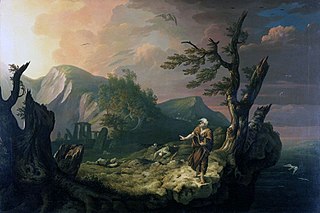 W
WWelsh art refers to the traditions in the visual arts associated with Wales and its people. Most art found in, or connected with, Wales is essentially a regional variant of the forms and styles of the rest of the British Isles, a very different situation from that of Welsh literature. The term Art in Wales is often used in the absence of a clear sense of what "Welsh art" is, and to include the very large body of work, especially in landscape art, produced by non-Welsh artists in Wales since the later 18th century.